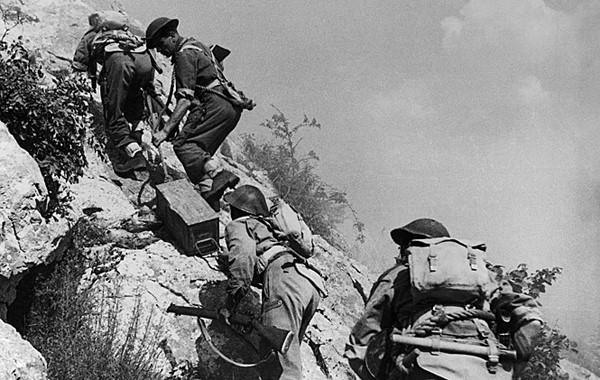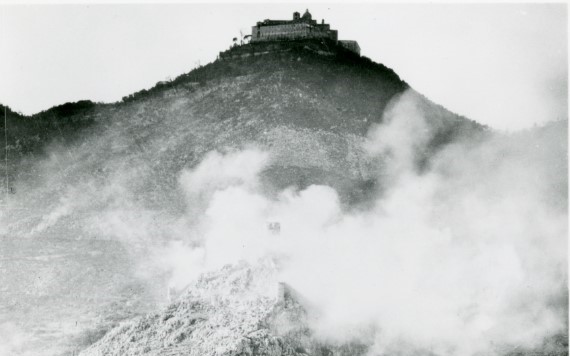By Cain O’Mahoney
May, this year sees the 80th anniversary of the grim battle for Monte Cassino, the decisive event that effectively drove Nazi Germany out of Italy, by opening up the road to Rome for Allied forces. But I have to raise a smile whenever I hear the media referring to it as a ‘British’ victory.
The Allied battle front at this stage in Italy in 1944, the ‘Cassino Front’, was divided into three sectors – the British sector in the centre, which included Monte Cassino; the Free French on the eastern flank, and US forces on the west. [Featured photo shows the monastery on top of Monte Cassino – the scene of the battle. Photo – US Army.]
British Sector: It took four assaults to finally recapture Monte Cassino. Alongside British soldiers were regiments from many corners of the Empire, such as the Canadian 1st Division, while most of the air cover was provided by the Royal Australian Air Force.
The second attack on Monte Cassino was led by the Indian Army and the Gurkhas. The third attack was led by the New Zealanders, which included the 28th (Maori) Battalion. The fourth and finally successful attack on the monastery was led by the Free Polish Brigade.
The African Auxiliary Pioneer Corps delivered logistics and ‘smoke companies’ (smoke cover during attacks). Although 10,000 West Indians had already volunteered and were serving as individuals with the British Army throughout all theatres of the war, a separate Caribbean Regiment had been raised, of volunteers mainly from Bermuda, whose key role was to escort 4,000 German POWs from the Cassino front to prison camps in Egypt.

There was a specialist commando unit made up of Free Belgium troops, and a Special Forces Section consisting entirely of German and Austrian Jewish and anti-fascist fighters, who proved their worth operating behind enemy lines. Also, following the fall of Mussolini, Italian Army regiments placed themselves under British command, with their ‘muleteer’ brigades proving invaluable in this mountainous region.
Free French Sector: On the Eastern flank of Cassino was the Free French Army, 60 per cent of which were from North Africa, namely the Goumiers of two Moroccan Divisions, and the 3rd Algerian Division. Despite their heroism, to understand the discrimination they faced from their Free French masters, and their use as cannon fodder, watch the excellent film Days of Glory.
US Sector: Because ‘Jim Crow’ segregation regulations were still rife in the US military, most black US soldiers were confined to providing transport and pioneer roles – however, the US military eventually relented, and the black 92nd Combat Division was formed and later fought in Italy.
Also under US command was the Forca Expedicionaria Brasileira – Brazil was the only country in South America to declare war on Nazi Germany (after many U Boat attacks on its shipping) and its Expeditionary Force of several thousand soldiers fought in Italy.
Prominent in the US sector was also the 442 ‘Nisei’ Infantry Regiment, made up US citizens of Japanese descent, mainly from Hawaii. They were sent to fight in Europe rather than the Pacific, for fear of being shot by twitchy Allied troops. For many Nisei soldiers, it could be said they were in a ‘hostage situation’, as many still had their parents in internment camps back home, who had been rounded up after Pearl Harbour. Facing such emotional blackmail to prove their patriotism – and hopefully get their parents and families released – it became the most decorated unit for its size in US military history: although finally totalling only 14,000 soldiers, the regiment was awarded 9,400 Purple Hearts (awarded for being wounded in combat) and 4,000 Bronze Stars for bravery, by the end of the war.
The Allied units fighting on the Cassino Front during World War II were the most multi-national combat force in military history, and many historians say the event laid the beginning of the idea for a ‘United Nations’ military role in the future. Others might say it is proof that imperialism – whether British, French or US – not only relies on their own workers to fight their wars but also likes to get everyone else to do the fighting for them, as well!




That was so interesting containing so much information I’d never heard before. Thanks for posting it.